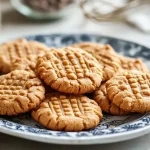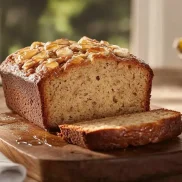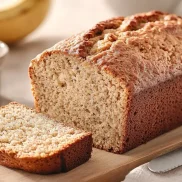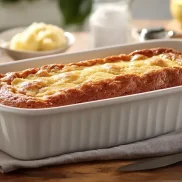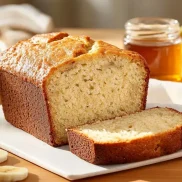Gluten-free baking has gained immense popularity in recent years as more people adopt gluten-free diets for health, dietary, or lifestyle reasons. Whether it’s due to celiac disease, gluten sensitivity, or personal preference, the demand for gluten-free cookies and other baked goods has grown exponentially. However, achieving the perfect gluten-free cookie can be a challenge, often requiring trial, error, and the right choice of flour. If you’re looking for a fantastic gluten free sugar cookie recipe, check out this gluten free sugar cookie recipe. This article dives deep into the question: What flour is best for gluten-free cookies? By the end, you’ll have all the knowledge to make informed decisions for your baking needs.
Table of Contents
Understanding Gluten-Free Baking
Creating gluten-free baked goods is an art that combines science, creativity, and a little patience. Gluten, a protein found in wheat, barley, and rye, plays a critical role in traditional baking by providing structure, elasticity, and that delightful chewiness in cookies. But when you remove gluten, you lose these essential characteristics, and that’s where gluten-free flours and innovative techniques come into play.
What is Gluten and Why Do Some People Avoid It?
Gluten is a protein that gives dough its stretchiness and helps baked goods hold their shape. For some people, consuming gluten triggers adverse reactions. Those with celiac disease, an autoimmune disorder, experience damage to the small intestine when exposed to gluten. Others may have non-celiac gluten sensitivity, which can cause symptoms like bloating, fatigue, and headaches. As a result, gluten-free diets have become a necessity for millions worldwide, making gluten-free baking more essential than ever.
The Role of Flour in Traditional and Gluten-Free Baking
In traditional baking, wheat flour is the cornerstone ingredient. Its gluten content is responsible for creating a cohesive structure in cookies, cakes, and bread. Gluten traps air bubbles, giving baked goods their light and airy texture. When baking without gluten, the choice of flour becomes even more critical. Gluten-free flours like almond, coconut, and rice flour each bring unique properties to the table, but they often need to be blended with other ingredients or binders to mimic the effects of gluten.
Challenges in Gluten-Free Baking
Baking without gluten comes with its own set of hurdles. The absence of gluten often results in crumbly textures, denser baked goods, or cookies that spread too thin. Moisture retention can also be a problem, as gluten-free flours tend to absorb more liquid. Additionally, achieving the right balance of flavor and texture can be tricky, as some gluten-free flours have distinct tastes that might overpower your cookies. Overcoming these challenges requires a good understanding of gluten-free ingredients and how they interact during baking. Armed with the right knowledge and tools, however, you can bake gluten-free cookies that rival their traditional counterparts in taste and texture.
Key Criteria for Choosing Gluten-Free Flour
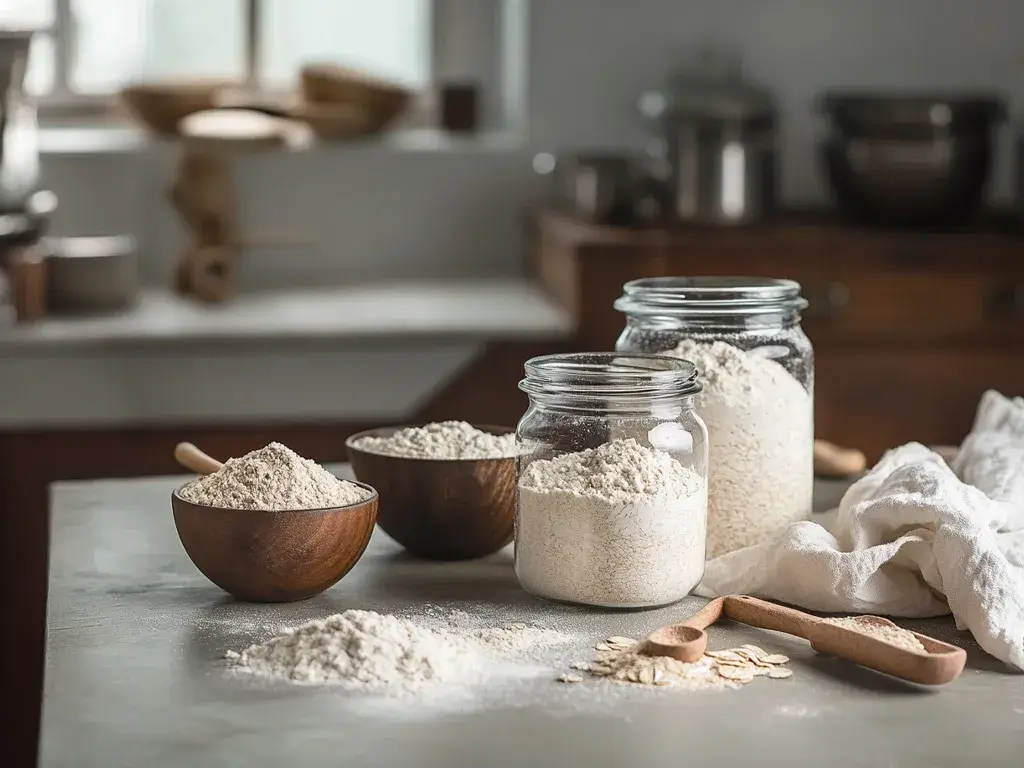
Choosing the right flour is paramount to creating delicious and successful gluten-free cookies. With a plethora of options available, it can feel overwhelming to determine which one will best meet your baking needs. However, by evaluating the texture, nutritional value, and flavor compatibility of gluten-free flours, you can make an informed decision that suits your preferences and dietary goals.
Texture and Consistency
Texture is one of the most crucial aspects of gluten-free baking. In traditional recipes, gluten provides elasticity, chewiness, and a cohesive structure. Without it, cookies can become too crumbly, dense, or flat. When selecting a gluten-free flour, consider its consistency. For instance, almond flour creates a soft, moist texture, making it perfect for chewy cookies. Coconut flour, on the other hand, is highly absorbent and requires more liquid or eggs to maintain a balanced consistency. Rice flour offers a lighter texture but can sometimes result in grittiness if not milled finely. Blending flours, such as combining almond and tapioca flour, often yields the best results by mimicking the qualities of wheat flour.
Nutritional Value
Nutritional value is another key criterion to keep in mind. Gluten-free flours vary widely in their nutritional profiles. For example, almond flour is high in protein, healthy fats, and vitamin E, making it a nutrient-dense choice. Coconut flour is rich in fiber and has a low glycemic index, which can benefit those managing blood sugar levels. Conversely, white rice flour is lower in nutrients but provides a neutral flavor and light texture. If health is a priority, consider flours that add nutritional benefits to your cookies while still achieving your desired baking results.
Flavor and Aroma Compatibility
Flavor and aroma can make or break your gluten-free cookies. While some gluten-free flours have mild and neutral tastes, others bring distinct flavors that can enhance or clash with your recipe. Almond flour has a slightly nutty flavor that complements chocolate, vanilla, and other rich ingredients. Coconut flour adds a hint of sweetness, making it ideal for sugar cookies and other light-flavored treats. Oat flour, with its hearty and earthy flavor, pairs well with cinnamon, nutmeg, and other warm spices. When choosing a gluten-free flour, think about the overall flavor profile of your cookies and ensure the flour enhances rather than detracts from it.
By focusing on these three essential criteria—texture, nutritional value, and flavor compatibility—you’ll be well-equipped to select the best gluten-free flour for your cookies. Experimenting with different options and blends will also help you discover the perfect combination for your unique baking style.
What Flour Is Best for Gluten-Free Cookies? Top Options to Consider
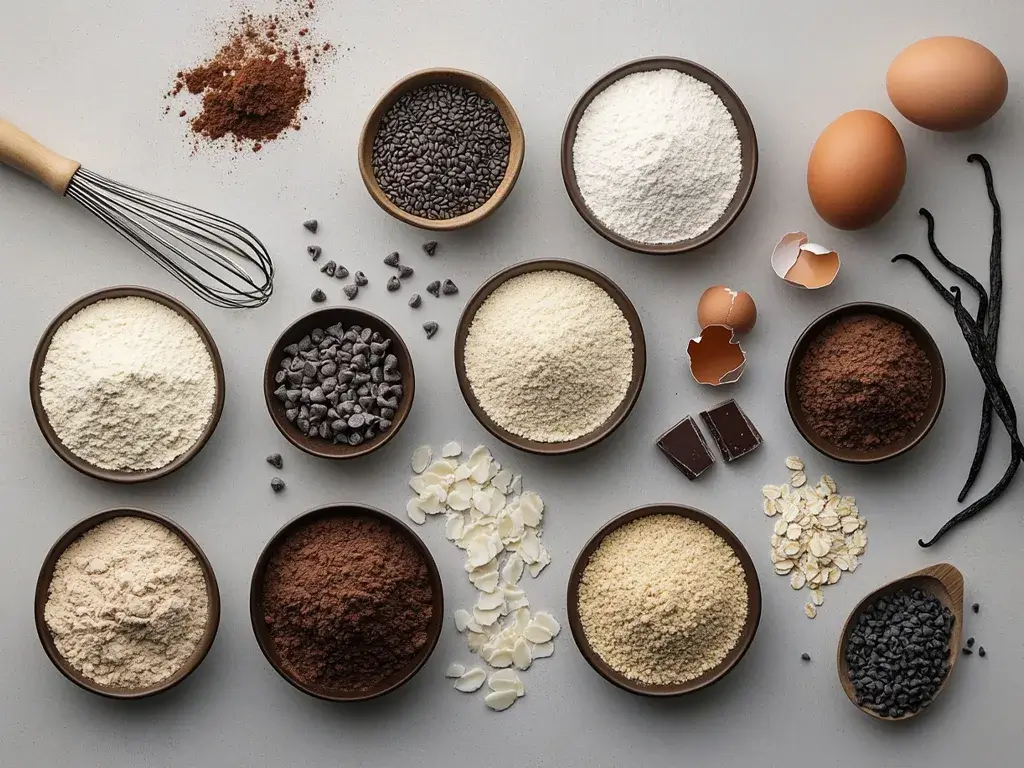
Navigating the world of gluten-free flours can be daunting, but understanding their unique properties can help you bake cookies that are both delicious and satisfying. Here are the top gluten-free flours for cookies, along with their pros, cons, and best uses.
Almond Flour: Pros and Cons
Almond flour, made from finely ground blanched almonds, is a popular choice in gluten-free baking.
Pros:
- Rich Flavor: Almond flour adds a nutty, buttery taste that complements chocolate and vanilla-based cookies.
- Moist Texture: It produces soft and chewy cookies, ideal for recipes like chocolate chip or snickerdoodles.
- Nutritional Value: High in protein, healthy fats, and vitamin E, almond flour provides added health benefits.
Cons:
- High Cost: Almond flour is pricier compared to other gluten-free options.
- Nut Allergies: It’s not suitable for those with nut allergies.
- Delicate Structure: Almond flour-based cookies can be fragile and prone to crumbling without proper binding agents.
Coconut Flour: Unique Features and Limitations
Coconut flour is derived from dried coconut meat and is known for its absorbent properties.
Pros:
- High Fiber Content: It’s rich in dietary fiber, promoting digestive health.
- Mild Sweetness: Its subtle coconut flavor enhances sugar cookies and shortbread.
- Low Glycemic Index: Coconut flour is great for those monitoring their blood sugar levels.
Cons:
- Highly Absorbent: It requires more liquid or eggs, making recipe adjustments necessary.
- Dense Texture: Overuse can result in overly dry or dense cookies.
- Strong Flavor: In some recipes, its coconut taste may overpower other ingredients.
Oat Flour: A Versatile Choice
Oat flour, made from finely ground oats, is a versatile and budget-friendly option.
Pros:
- Neutral Flavor: It has a mild taste that works well in a variety of cookie recipes.
- Easy to Make: Oat flour can be prepared at home by grinding oats in a food processor.
- Nutritional Benefits: It’s rich in fiber and contains beta-glucans, which support heart health.
Cons:
- Cross-Contamination Risk: Ensure it’s certified gluten-free to avoid traces of wheat.
- Slight Grittiness: Can sometimes produce a slightly gritty texture in cookies.
- Limited Structure: Often needs to be combined with other flours for better binding.
Rice Flour: Affordable and Accessible
Rice flour, made from ground white or brown rice, is widely used in gluten-free baking.
Pros:
- Affordability: It’s one of the most budget-friendly gluten-free flours.
- Neutral Flavor: Its mild taste doesn’t overpower cookie recipes.
- Wide Availability: Easily found in grocery stores and online.
Cons:
- Grittiness: Can result in a grainy texture if not finely milled.
- Low Nutrition: Offers fewer nutrients compared to almond or oat flour.
- Crumbly Texture: Often requires blending with other flours to improve consistency.
Cassava Flour: A Grain-Free Alternative
Cassava flour, made from the root of the cassava plant, is a great option for grain-free and paleo-friendly baking.
Pros:
- Grain-Free: Suitable for grain-free and paleo diets.
- Neutral Taste: Doesn’t interfere with the flavor of cookies.
- Elasticity: Mimics the binding properties of wheat flour better than many other gluten-free flours.
Cons:
- High Starch Content: Results in a higher carbohydrate content compared to other options.
- Limited Availability: Not as widely available as almond or rice flour.
- Cost: Cassava flour can be relatively expensive.
By understanding the strengths and limitations of these top gluten-free flours, you can choose the perfect option for your cookie recipes. Don’t hesitate to experiment with blends to achieve the ideal texture, flavor, and structure for your baked goods.
Blending Gluten-Free Flours for Perfect Cookies
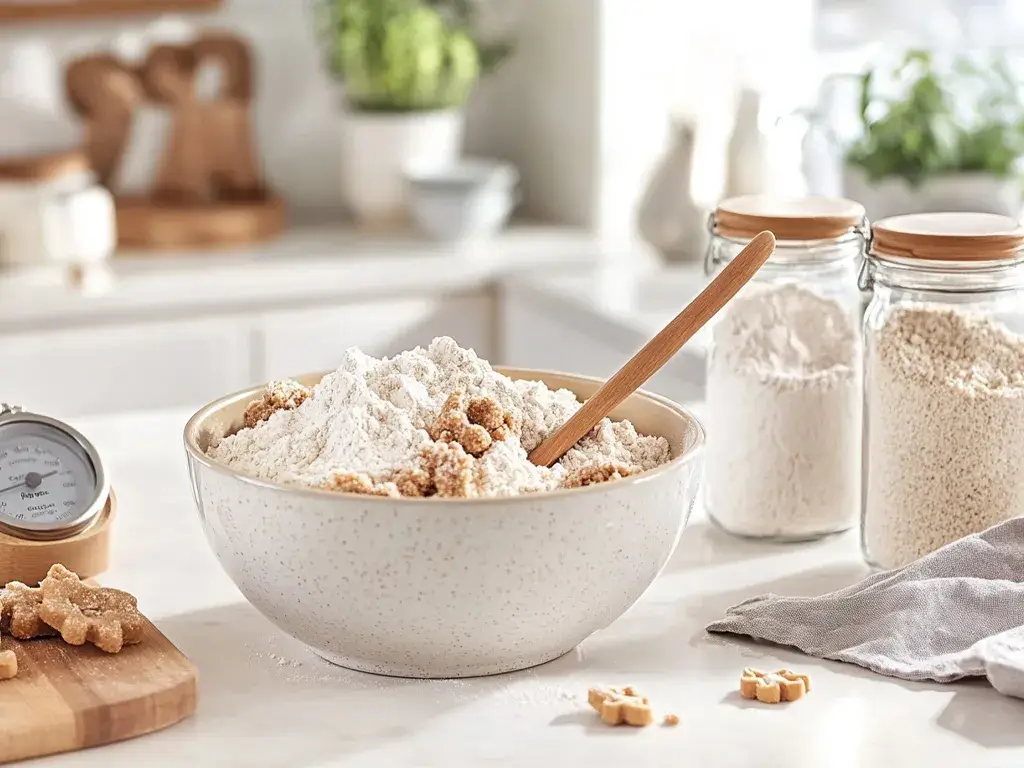
Crafting the perfect gluten-free cookie often requires more than a single type of flour. Blending gluten-free flours can help achieve a balance of flavor, texture, and structure, resulting in cookies that rival their traditional counterparts. Here, we explore why blends work better, common flour combinations, and how to create your own DIY cookie flour blends.
Why Blends Work Better Than Single Flours
Single gluten-free flours often fall short in replicating the properties of wheat flour. For example, almond flour provides moisture but lacks structure, while rice flour offers lightness but can be gritty. By blending flours, you can combine their strengths and compensate for their weaknesses. A good blend ensures:
- Balanced Texture: Softness from almond or oat flour can complement the sturdiness of rice or cassava flour.
- Improved Flavor: Neutral flours like rice or tapioca provide a base, allowing stronger flavors like coconut or almond to shine.
- Enhanced Elasticity: Adding starches like tapioca or potato starch helps mimic the elasticity provided by gluten.
Blends work synergistically, creating cookies that are chewy, soft, or crisp depending on your preference.
Common Gluten-Free Flour Blends
Store-bought gluten-free flour blends can simplify the baking process, as they’re pre-mixed to balance flavor and functionality. Popular blends often include:
- All-Purpose Gluten-Free Blend: Typically contains rice flour, potato starch, and xanthan gum. Ideal for general baking needs.
- Nut-Based Blends: Almond flour combined with coconut or tapioca flour for rich, moist cookies.
- Oat-Based Blends: Oat flour mixed with starches and rice flour for hearty, rustic cookies.
Each blend has a specific purpose, so choosing the right one depends on your recipe’s requirements.
DIY Gluten-Free Cookie Flour Blend Recipes
Making your own gluten-free flour blend allows you to tailor it to your taste and dietary needs. Here are a few tried-and-tested recipes for cookie perfection:
- Basic All-Purpose Cookie Blend:
- 2 cups rice flour
- 1 cup tapioca starch
- 1 cup potato starch
- 1 teaspoon xanthan gum
- Nutty Chewy Cookie Blend:
- 1 cup almond flour
- 1 cup tapioca starch
- 1/2 cup coconut flour
- 1/2 teaspoon psyllium husk
- Rustic Oat Cookie Blend:
- 2 cups oat flour
- 1 cup sorghum flour
- 1 cup arrowroot starch
- 1 teaspoon xanthan gum
When blending your own flour, mix thoroughly to ensure even distribution of ingredients. Store your blend in an airtight container to maintain freshness.
Blending gluten-free flours opens up endless possibilities for creating cookies that delight both gluten-free and traditional eaters alike. With the right combination, you’ll find that baking gluten-free is both rewarding and delicious.
Binders and Additives to Improve Texture
Achieving the perfect texture in gluten-free cookies often requires a bit of extra help. Without gluten to provide structure and elasticity, binders and additives play a vital role in holding your cookies together and enhancing their chewiness or crispness. Here, we explore the use of xanthan gum, guar gum, and their natural alternatives like psyllium husk and chia seeds.
The Role of Xanthan Gum and Guar Gum
Xanthan gum and guar gum are two of the most common binders used in gluten-free baking. These additives help mimic the elasticity and binding properties of gluten, ensuring your cookies hold their shape and have a satisfying texture.
- Xanthan Gum: Derived from fermented sugar, xanthan gum acts as a stabilizer and thickener. In cookie recipes, it provides elasticity, helping the dough bind together and preventing it from crumbling. Use sparingly, as a little goes a long way (typically 1 teaspoon per cup of gluten-free flour).
- Guar Gum: Extracted from guar beans, this plant-based binder is an excellent alternative to xanthan gum. Guar gum is particularly effective in creating a soft and tender texture. It’s often used in similar quantities as xanthan gum and works well in recipes that call for moisture retention.
While both gums are effective, some bakers prefer one over the other based on dietary needs or personal preference. Keep in mind that overusing gums can result in a gummy or overly dense texture.
Alternatives to Gums: Psyllium Husk and Chia Seeds
For those looking for natural or gum-free alternatives, psyllium husk and chia seeds are fantastic options that add both binding properties and nutritional benefits.
- Psyllium Husk: This fiber-rich plant-based additive works wonders in gluten-free baking. When mixed with water, psyllium husk forms a gel-like consistency that mimics gluten’s elasticity. It’s particularly useful in cookie recipes, providing structure and a slightly chewy texture. Use about 1 tablespoon per cup of gluten-free flour for best results.
- Chia Seeds: Known for their ability to absorb liquid and form a gel, chia seeds are another excellent alternative. They not only bind the dough but also add a subtle crunch and boost of omega-3 fatty acids. To use, mix 1 tablespoon of chia seeds with 3 tablespoons of water and let it sit for a few minutes to form a gel before incorporating it into your dough.
Both psyllium husk and chia seeds are natural, nutritious options that can enhance the texture of your cookies while catering to various dietary preferences.
By understanding the role of binders and exploring alternatives, you can fine-tune your gluten-free cookie recipes to achieve the perfect balance of texture and flavor. Experiment with these options to discover what works best for your baking needs.
Frequently Asked Questions
How do you keep gluten-free cookies from falling apart?
Keeping gluten-free cookies from falling apart requires the use of effective binders and proper techniques. Ingredients like xanthan gum, psyllium husk, or chia seed gel help hold the dough together. Additionally, chilling the dough before baking can prevent spreading and crumbling. Ensure precise measurements, as gluten-free flours are less forgiving than wheat flour, and always handle the dough gently to avoid overmixing. Learn more
What happens when you use gluten-free flour in cookies?
Using gluten-free flour in cookies changes the texture and structure of the final product. Without gluten, cookies may be more crumbly or dense. However, with the right flour blend and binders, you can create cookies that are soft, chewy, or crisp, depending on your preference. Experimentation and adjustments to liquid and fat ratios may be necessary to perfect your recipe. Learn more
Can I substitute gluten-free flour 1:1 in cookie recipes?
Not all gluten-free flours can replace wheat flour 1:1 in recipes. All-purpose gluten-free blends with binders like xanthan gum are best for direct substitutions. Single flours, like almond or coconut, often require additional ingredients or adjustments to replicate the texture and consistency of traditional cookies.
What’s the best gluten-free flour for beginners?
For beginners, an all-purpose gluten-free flour blend is the best choice. These blends are pre-mixed to balance flavor, texture, and structure, making them ideal for a wide range of recipes. Look for one with added xanthan or guar gum to simplify your baking process.
Why do my gluten-free cookies turn out dry?
Gluten-free cookies can turn out dry due to the absorbent nature of some gluten-free flours, like coconut or rice flour. To counteract this, increase the liquid or fat in your recipe, and avoid overbaking. Using a blend of flours and incorporating moisture-retaining ingredients, like applesauce or yogurt, can also help.
How do I make my gluten-free cookies softer?
To make gluten-free cookies softer, use ingredients that retain moisture, such as brown sugar, honey, or butter. Adding a bit more liquid, such as milk or an extra egg yolk, can also enhance softness. Properly storing cookies in an airtight container with a slice of bread helps maintain their moisture and texture.
Conclusion
Choosing the right flour is essential to creating gluten-free cookies that delight the taste buds and rival their traditional counterparts. From understanding the unique characteristics of gluten-free flours to mastering the art of blending and using binders, each step is an opportunity to perfect your baking skills. By focusing on texture, flavor, and structure, you can achieve cookies that are soft, chewy, or crisp—whatever your heart desires.
Whether you’re a beginner or an experienced baker, experimenting with different flours and techniques will help you discover your ideal recipe. With patience and practice, gluten-free baking can be both rewarding and delicious. So, roll up your sleeves, preheat your oven, and enjoy the sweet success of baking gluten-free cookies that everyone will love.

